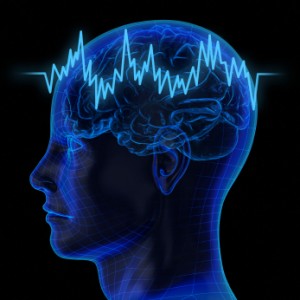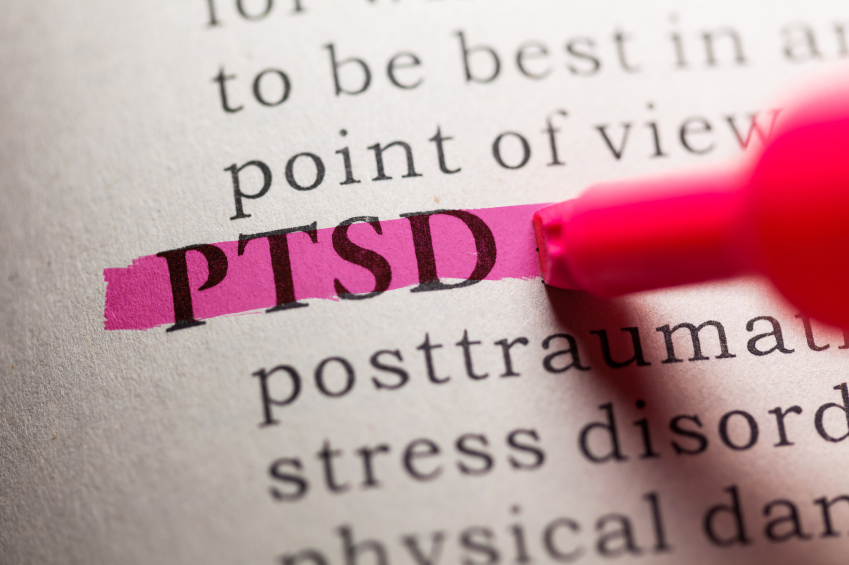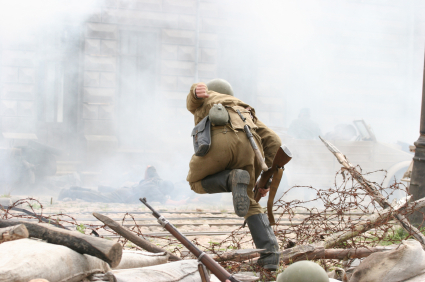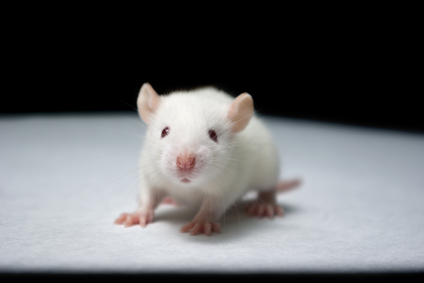Link Between Childhood Trauma and Difficult Course of Bipolar Disorder Clarified
A collaboration between Norwegian and French researchers led by Bruno Etain has clarified the pathway by which childhood trauma is linked to worse outcomes among people with bipolar disorder. The researchers, who presented their work in a poster at the 2015 meeting of the Society of Biological Psychiatry, replicated earlier findings by this editor (Robert Post) that patients who experienced trauma as a child had a more adverse course of bipolar disorder. Etain and colleagues found a link between childhood trauma and an earlier age of onset of bipolar disorder, rapid cycling, suicide attempts, and cannabis misuse.
The researchers identified more than 550 patients with bipolar disorder, who answered questionnaires about their history of bipolar disorder and childhood trauma. Their DNA was also analyzed, and the researchers found that the effect of childhood trauma on age of onset was mediated by the presence of common genetic variants in proteins related to stress (the serotonin transporter) and immune function (Toll-like receptors). They also found that the traits of mood lability (or moodiness) and impulsivity mediated the effects of trauma on clinical outcomes.
The lasting epigenetic effects of child maltreatment and adversity noted in the above abstract are consistent with a large literature showing more epigenetic effects in these individuals than in controls. While genetics are important, the impact of the environment is also substantial.
Young Rats That Witness Maternal Abuse Show Depression-Like Behavior in Adulthood
Rodents that are subjected to social defeat (being overpowered by a bigger, more aggressive animal) develop a syndrome that resembles human depression—they avoid social interaction, lose interest in sucrose, and do less exploring of new places or other animals. A recent finding showed that even witnessing the social defeat of a peer was enough to bring about the depressive behaviors. The same researchers, led by Samina Salim, recently found that young rats (aged 21–27 days) that witnessed their mother go through the trauma of social defeat showed depression-like behavior themselves as adults (at age 60 days).
The rats saw their mothers defeated by the larger rat every day for seven days. As adults, those who witnessed this abuse exhibited depression-like behavior compared to rats of the same age and gender that had not witnessed abuse. The depressive rats gave up more quickly on a test of forced swimming. Male rats showed great depression-like behavior than female rats.
It has been estimated by the American Psychological Association that 15.5 million children in the US witness physical or emotional abuse of a parent (usually their mother). Children who witness domestic violence often show symptoms of post-traumatic stress disorder (PTSD). This rodent research may lead to a better understanding of the consequences of witnessing trauma in childhood, and potential treatments that could help.
Editor’s Note: These data show that rats have something like empathy, and that the psychological aspects of stress (including verbal abuse in humans and witnessing another’s abuse in rodents) may have profound and lasting consequences on behavior.
Acute Steroid Injection May Ward Off PTSD
Low cortisol after a trauma is a risk factor for developing chronic post-traumatic stress disorder (PTSD). Researcher Joseph Zohar studied has been researching the effects of steroids on the development of PTSD and presented some findings at the 2014 meeting of the International College of Neuropsychopharmacology.
Twenty-five patients who experienced a traumatic event and showed acute stress symptoms were given either a single high-dose injection of hydrocortisone (100–140 mg) or a placebo within six hours of the trauma. Follow-up evaluation took place after two weeks, one month, and three months. Those who received this single high dose of hydrocortisone had lowered stress symptoms and less subsequent PTSD compared to those who received placebo.
A Re-Kindling Process Produces Late-Onset PTSD
Not everyone who experiences trauma develops post-traumatic stress disorder (PTSD) immediately. Researchers are discovering that some people go on to develop symptoms like flashbacks or intrusive thoughts, anxiety, and withdrawal, sometimes after long periods of being asymptomatic. Two studies provide hints about the mechanism of this late-onset (or delayed-type) PTSD.
In an article by Danny Horesh et al. published in the journal Psychiatry Research in 2013, a reported 16.5% of 675 Israeli veterans of the 1982 conflict with Lebanon developed late-onset PTSD after a completely non-symptomatic period. The number of deployments soldiers were sent on and the number of terror incidents they experienced within Israel after the war were correlates of the late-onset PTSD, while continuous post-war employment was a protective factor reducing late-onset PTSD.
In a study of 260 older adults (above age 60) who survived the destruction around Galveston Bay, Texas by Hurricane Ike in 2008, Robert H. Pietrzak et al. reported in the Journal of Psychiatry Research in 2013 that 5.3% developed late-onset PTSD. In this case as well, a greater number of subsequent traumatic and stressful life events (and in particular financial difficulties) was associated with late onset of PTSD. The majority of participants in Pietrzak’s study (78.7 %) had no to few PTSD symptoms, while 16.0% had chronic PTSD symptoms from the outset persisting through assessments at three months and 15 months.
Editor’s Note: These two studies reveal that upon prospective follow-up, a small but substantial group of patients (5–16%) develop a late-onset type of PTSD. Acute onset PTSD has been closely linked to new trauma in adulthood, especially following the occurrence of previous (childhood) traumas. The late-occurring variety of PTSD seems to appear after an incubation period, and appears to be closely associated with the occurrence of new traumatic events during the well interval. These new events may result in a kindling-like effect, where repetition of subthreshold stimuli come to evoke a full-blown episode. PTSD appearing after repeated traumatic experiences may operate in a similar fashion to seizures that gradually emerge following repeated electrical stimulation of the amygdala (i.e. amygdala kindling). Read more
Childhood Adversity and Epigenetic Pockmarks
 Maltreatment in childhood may have a lasting impact on health through epigenetics. Epigenetics refers to the idea that events and substances in the environment can affect the structure of DNA by adding chemicals (often methyl or acetyl groups) onto DNA and histones (structures around which DNA is wound) in such a way that the DNA is more or less likely to be transcribed and activated to produce new proteins. Thus our DNA is shaped not only by the genetic inheritance we receive from our parents, but also by events in the environment (which do not alter the sequence of DNA but can influence how easily the DNA gets turned on to produce proteins in our bodies.)
Maltreatment in childhood may have a lasting impact on health through epigenetics. Epigenetics refers to the idea that events and substances in the environment can affect the structure of DNA by adding chemicals (often methyl or acetyl groups) onto DNA and histones (structures around which DNA is wound) in such a way that the DNA is more or less likely to be transcribed and activated to produce new proteins. Thus our DNA is shaped not only by the genetic inheritance we receive from our parents, but also by events in the environment (which do not alter the sequence of DNA but can influence how easily the DNA gets turned on to produce proteins in our bodies.)
A 2013 study by Divya Mehta et al. published in the Proceedings of the National Academy of Sciences analyzed the childhood backgrounds of adult patients with PTSD and found that patients’ profiles of disease-related gene expression and DNA methylation in blood differed greatly depending on whether or not they had experienced abuse in childhood. Adults who had been abused as children were about twice as likely to show patterns of DNA methylation accompanying their PTSD-related changes in gene expression.
The implication of this research is that childhood trauma can leave a kind of epigenetic pockmark on a person’s DNA, affecting the way the DNA produces proteins, potentially for the rest of that person’s life.
N-acetylcysteine Improves Blast-Induced Mild Traumatic Brain Injury
Michael E. Hoffer et al. reported in the journal PLosOne in 2013 that veterans with blast-induced mild traumatic brain injury had a better acute outcome when they were given the antioxidant N-acetylcysteine (NAC) within the first 24 hours after the trauma versus when they were given placebo during the same period. Forty-two percent of those receiving placebo had a good acute outcome, while 86% of those receiving N-acetylcysteine had a good acute outcome. Memory loss, sleep disturbance, dizziness, and headaches all improved more in the N-acetylcysteine group. NAC’s benefits diminished when it was given 3 or 7 days after the trauma.
Editor’s Note: These data add to the growing list of neuropsychiatric syndromes in which NAC has shown efficacy. These include schizophrenia, bipolar depression, unipolar depression, cocaine and heroin addiction, gambling addiction, trichotillomania (compulsive hair-pulling), obsessive-compulsive disorder (as an adjunctive treatment to SSRIs), and improvement in irritability and stereotypy (repetitive behaviors) in children with autism.
Given what appears so far to be a relatively benign side effects profile for NAC, and the potential for severe consequences from traumatic brain injury (TBI), a case for wider use of NAC (for example in emergency rooms) might be made.
The mechanisms of action of NAC in different syndromes remains to be clarified. Researcher Michael Berk used NAC in schizophrenia and bipolar disorder and more recently in unipolar depression because it has antioxidant properties. Peter Kalivas found that NAC can normalize glutamate in the reward area of the brain through actions on the cystine-glutamate exchanger, and it also increases clearance of glutamate by increasing the glutamate transporter in glial cells. NAC decreases the amount of cued glutamate release in a part of the brain called the nucleus accumbens, which may be helpful in recovery from pathological habits. NAC also has anti-inflammatory and perhaps neuroprotective effects, and it increases brain-derived neurotrophic factor (BDNF), which protects neurons and is important for long-term learning and memory. Which of these many actions is important in the treatment of PTSD is not yet known.
Opening The Reconsolidation Window to Extinguish Fear Memories: A New Conceptual Approach to Psychotherapeutics
 Memory processes occur in several phases. Short-term memory is converted to long-term memory by a process of consolidation that requires the synthesis of new proteins. Transcription factors in the nuclei of hundreds of millions of nerve cells are activated so that specific synapses can be modified for the long term. If protein synthesis is inhibited during a period within a few hours after new learning has occurred, what was learned never gets consolidated and is essentially forgotten. It is thought that this phase of consolidation happens when a memory trace moves from short-term storage in the hippocampus to long-term storage in the cerebral cortex.
Memory processes occur in several phases. Short-term memory is converted to long-term memory by a process of consolidation that requires the synthesis of new proteins. Transcription factors in the nuclei of hundreds of millions of nerve cells are activated so that specific synapses can be modified for the long term. If protein synthesis is inhibited during a period within a few hours after new learning has occurred, what was learned never gets consolidated and is essentially forgotten. It is thought that this phase of consolidation happens when a memory trace moves from short-term storage in the hippocampus to long-term storage in the cerebral cortex.
Recently a later phase of memory storage called reconsolidation has been identified. When an old memory is recalled, the reconsolidation window opens, and the memory trace becomes temporarily amenable to change. The reconsolidation window (the period during which the trace can be revised) is thought to begin five minutes after a memory is recalled and last for an hour or possibly two. New learning that takes place during the reconsolidation window can be more profound than learning that occurs without recall of the related memory or after the reconsolidation window has closed.
Consider the example of a fearful memory created when a person is attacked in a dark alley. If the person repeatedly visits the same alley without being attacked, they can eventually become less afraid of dark places. Repeated viewing of pictures of dark places can also extinguish the fear. These are typical ways in which a fear memory is extinguished. However, the original fear is subject to spontaneous recovery (the fear of dark places returns without provocation) or to reactivation (if another dangerous situation is encountered, the person may regain their fear of dark alleys).
The new findings suggest that if the extinction process (the repeated exposures to the pictures of the dark alley) takes place during the reconsolidation window after the fear memory of being attacked is recalled, the old fear can be permanently reversed (wiped clean, or re-edited such that it appears forgotten) so that it is no longer subject to spontaneous recovery or reactivation.
Editor’s Note: To accomplish extinction training within the reconsolidation window, first a person must actively recall the old memory, opening the reconsolidation window. Then, after a 5-minute delay, extinction training (e.g. new learning that the old feared place is now safe) should take place within the next hour. This process has been demonstrated in animal studies and is thought to be clinically relevant for humans in the case of phobic anxiety and post-traumatic stress disorder (PTSD). The psychotherapeutic implications of using the reconsolidation window to better ameliorate PTSD fears, avoidance, and flashbacks are enormous.
Observing the Amygdala’s Role in the Extinction of Fear Memory Traces
The amygdala is a crucial part of the learned or conditioned fear pathway. It is activated during fear conditioning and during the recall of cues associated with the fear experience. If the amygdala is removed, conditioning fear does not occur.
A new study published in Science this year by Agren et al. indicates that in humans, the amygdala-based response to conditioned fear can be completely abolished using extinction training within the memory reconsolidation window. Training that took place 10 minutes after the fear memory was activated was successful, while training that took place 6 hours later was not. Read more
Memory Consolidation and Reconsolidation: Cortisone after trauma could prevent PTSD
 Memories are created in a series of phases in which different neurobiological mechanisms are required. In order for short-term memories to be placed in long-term storage, new protein synthesis is required. If protein synthesis is inhibited during a window about 2-4 hours after the short-term memory was encoded, consolidation into long-term memory does not occur.
Memories are created in a series of phases in which different neurobiological mechanisms are required. In order for short-term memories to be placed in long-term storage, new protein synthesis is required. If protein synthesis is inhibited during a window about 2-4 hours after the short-term memory was encoded, consolidation into long-term memory does not occur.
In addition to the initial phase of memory consolidation, a second phase of memory reconsolidation is now recognized. During this phase, memory is again alterable.
The alterability of memories has implications for some types of post-traumatic stress disorder (PTSD), in which emotional memories repeatedly intrude into consciousness. Pharmacological intervention during the period of memory reconsolidation may be able to reduce the impact of traumatic memories.
One example of an attempt to alter memory consolidation or reconsolidation after trauma has been reported by researcher Ariel Shalev and colleagues. These researchers found that administration of a high dose of intravenous cortisone (100 to 240mg) immediately following an extreme trauma was able to decrease the incidence of PTSD. One month after a traumatic event, the incidence of PTSD was 60% in those who received placebo, compared to only 16% in those who received the intravenous cortisone.
Memories Erased From the Amygdala of Rats
A recent study found that in rodents, new negative memories can be deleted. Rats in the study were taught conditioned avoidance. For example, a light or a sound would signal that a mild shock would be delivered through the floor of the chamber in which the rat was housed. The rat could avoid the shock by running to the other side of the cage. Once the rat learned that the light or sound signal preceded a shock, the rat began switching sides when the light or sound cue appeared, even if no shock was given. This response to the conditioned signal is evidence that learning has taken place and is stored in memory.
The researchers found that when a rat formed a new conditioned avoidance memory, there were increases in cyclic AMP response element binding (CREB) protein in specific neurons in the rat’s lateral amygdala (about 20% of the total number of neurons in the amygdala). Then, using extraordinarily sophisticated molecular biology, the investigators attached a diphtheria toxin onto the CREB protein, which caused the specific neurons involved in the conditioned avoidance learning to be killed while the other neurons in the amygdala (those not associated with the new memory) survived. As a result, the animals couldn’t remember anything about the specific avoidance learning, but other memories could be formed and remained accessible.
Obviously, this type of approach is not yet pertinent to clinical therapeutics in humans, but this research does teach us that in rodents, a conditioned avoidance memory activates a subset of the neurons in the lateral amygdala, and the elimination of these neurons eliminates specific learned memories, but not other types of learning.
Ultimately this kind of preclinical data may lead to novel clinical approaches to specific traumatic memories that are associated with post-traumatic stress disorder (PTSD).







